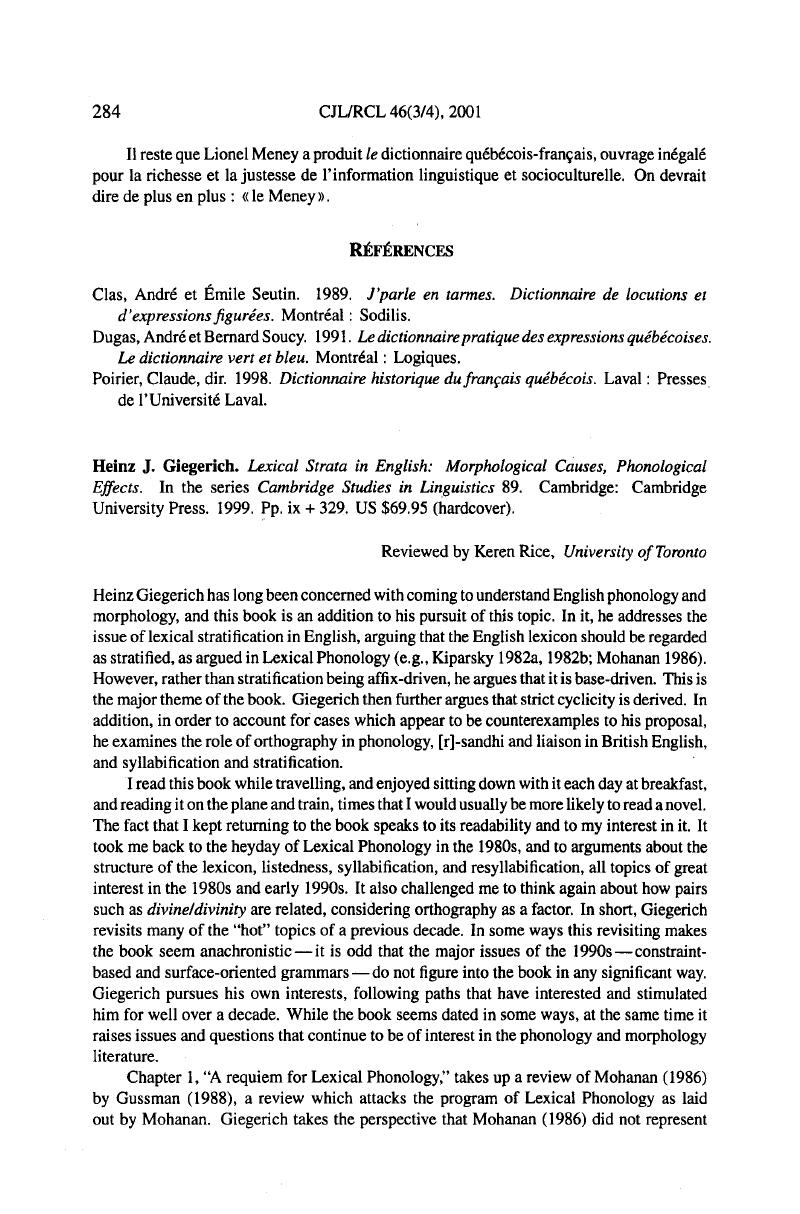No CrossRef data available.
Article contents
Heinz J. Giegerich. Lexical Strata in English: Morphological Causes, Phonological Effects. In the series Cambridge Studies in Linguistics 89. Cambridge: Cambridge University Press. 1999. Pp. ix + 329. US $69.95 (hardcover).
Published online by Cambridge University Press: 27 June 2016
Abstract
An abstract is not available for this content so a preview has been provided. Please use the Get access link above for information on how to access this content.

- Type
- Reviews/Comptes rendus
- Information
- Canadian Journal of Linguistics/Revue canadienne de linguistique , Volume 46 , Issue 3-4 , December 2001 , pp. 284 - 287
- Copyright
- Copyright © Canadian Linguistic Association 2001
References
Benua, Laura. 1997. Transderivational identity: Phonological relations between words. Doctoral dissertation, University of Massachusetts, Amherst.Google Scholar
Booij, Geert. 1997. Non-derivation phonology meets lexical phonology. In Derivations and constraints in phonology, ed. Roca, Iggy, 261–288. Oxford: Clarendon Press.CrossRefGoogle Scholar
Chomsky, Noam, and Halle, Morris. 1968. The sound pattern of English. New York: Harper and Row.Google Scholar
Gussman, Edmund. 1988. Review of K.P. Mohanan, Lexical phonology. Journal of Linguistics
24:232–239.Google Scholar
Hammond, Michael. 2000. Review of Heinz J. Giegerich, Lexical strata in English: Morphological causes, phonological effects. Phonology
17:287–290.Google Scholar
Horwood, Graham. 2001. Review of Heinz J. Giegerich, Lexical strata in English: Morphological causes, phonological effects. LinguistList: www.linguistlist.org/issues/12/12-1567 .html#l.Google Scholar
Kenstowicz, Michael. 1996. Base-identity and uniform exponence: Alternatives to cyclic-ity. In Current trends in phonology: Models and methods, Vol. 1, ed. Durand, Jacques and Laks, Bernard, 363–394. Salford: European Studies Research Institute.Google Scholar
Kiparsky, Paul. 1982a. From cyclic to lexical phonology. In The structure of phonological representations (part I), ed. van der Hulst, Harry, 131–175. Dordrecht: Foris.Google Scholar
Kiparsky, Paul. 1982b. Lexical phonology and morphology. In Linguistics in the morning calm, Vol. 2, ed. Yang, I.S., 3–91. Seoul: Hanshin.Google Scholar
Kiparsky, Paul. 2000. Opacity and cyclicity. The Linguistic Review
17:351–366.CrossRefGoogle Scholar
Maxwell, Mike. 2001. Review of Heinz J. Giegerich, Lexical Strata in English: Morphological causes, phonological effects. LinguistList: www.linguistlist.org/issues/12/12-595.html#l.Google Scholar
McCarthy, John, and Prince, Alan. 1993. Prosodie morphology I: Constraint interaction and satisfaction. Ms., University of Massachusetts, Amherst and Rutgers University.Google Scholar
Szpyra, Jolanta. 1989. The phonology-morphology interface: Cycles, levels, and words. London: Routledge.Google Scholar




